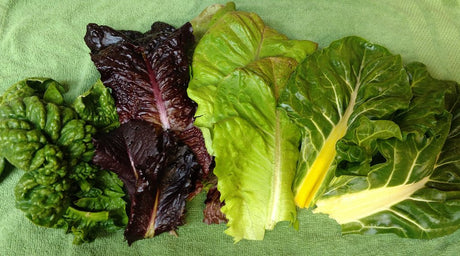
14 Fantastic Types of Lettuce to Grow
Wondering how to grow your favorite greens? Looking for unique varieties that aren't necessarily available in the store? This is a great place to start if you're looking for more...
Mary Smith |
Welcome to our store Learn more

Wondering how to grow your favorite greens? Looking for unique varieties that aren't necessarily available in the store? This is a great place to start if you're looking for more...
Mary Smith |

August 2016 Are you ready for FALL??? From Fall Planning & Planting Part 1 CROP ROTATION This is a very critical part of any garden plan. To avoid diseases...
Mary Smith |

FALL is fast approaching! Some of you are thinking about your favorite fall crops. Those of you in warmer climates like South Florida are gearing up for big-time planting season....
Mary Smith |

It's almost December so we're finally posting our planting guide for Florida. If this is your first time reading our blog, we offer a monthly planting guide for the entire...
Mary Smith |
There are a few vegetables that are perennials that, under the right conditions, continue to grow all year long. Some for many years after the initial planting. Find out...
Mary Smith |

There are two main types of carrot - early and maincrop, which also come in long and short root varieties. As their name suggests, early varieties are planted earlier on...
Mary Smith |
There are so many unique varieties of Heirloom Cabbage and GREENS. Check out this New Jersey Wakefield Cabbage 70 days. (Brassica oleracea capitata) Easy to grow, they are very productive....
Mary Smith |
What are You planting this October? PAK CHOY Cabbage is an excellent Fall crop! Mary's Heirloom Seeds Quick Links NEW Seed Combo Packs BACK TO BASICS HOMESTEAD PACK FALL GARDEN...
Mary Smith |
This month we're breaking up our Seed Planting Guide. October is another HUGE planting month for Florida and we've split up our guide into 3 regions. At Mary's Heirloom Seeds...
Mary Smith |
Are you Ready to plant Cool-Weather Crops? Mary's Heirloom Seeds FALL is officially here. Happy Fall to you and best wishes for your Fall Garden. We have been sharing a...
Mary Smith |
It's getting cooler in parts of the US as we prepare for FALL planting.Are you ready for Fall? Arugula Beets Broccoli Brussels sprouts Cabbage Collards Carrots Cauliflower Celery (mild winter...
Mary Smith |
We did a bit of research before adding Humic Acid at Mary's Heirloom Seeds. Here's what we found: Humic acid isn't really acid so don't let that word scare you off...
Mary Smith |
It's that time to start thinking about GARLIC. This is our second year of offering several varieties of Organic Garlic Seed at Mary's Heirloom Seeds. Pre-Orders of Garlic is still...
Mary Smith |
Are you ready to plant for FALL? ***SALE EXTENDED THRU 9/2/15*** Fringed Kale Mary's Heirloom Seeds Quick Links Echinacea Coconut Coir Pellets POPPY Seed Starting SUPPLIESOrganic Plant Food Organic...
Mary Smith |